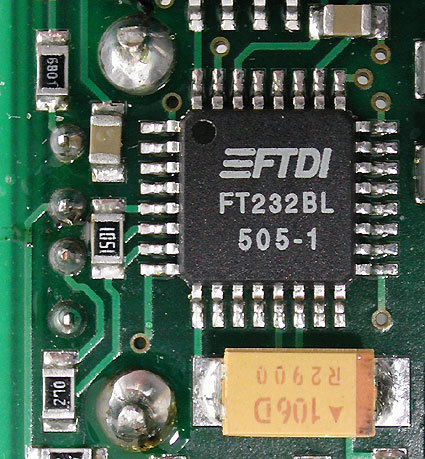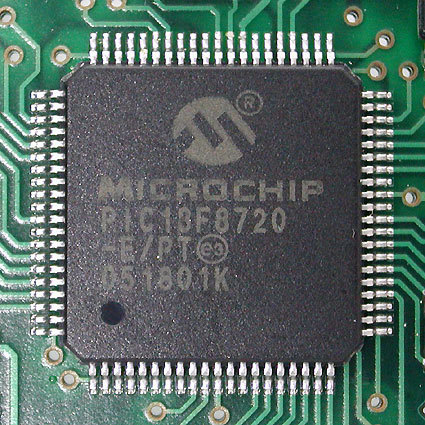Paying The Price For High-End Fan Control
Faster With USB?
A critical advantage vis-à-vis the new Fan-O-Matic's predecessor is the integrated USB port. The COM serial interface previously used has long been outdated, with barely a newer motherboard with i925X or i955 chipsets in particular sporting such a beast - and when they do, often the external connection can only be established via extra slot brackets.
One thing stands out, however, the first time you connect it to a computer: It locates an additional COM port; a fact which is also indicated by the driver to be installed. A look inside the device's guts confirms our suspicion: An FT232 from FTDI converts the signals from the USB data to a common COM interface. Thus the new USB connection entails no speed bonus, but only makes it more flexible to deploy on newer motherboards. A native USB solution would be a whole lot faster and would spare users the hassle of selecting the COM port.
One fact that proves advantageous is that the same software can be used for both the USB and COM models of the Fan-O-Matic, not to mention that the manufacturer saves on development costs.
FTDI232 USB to serial interface IC converter; the USB port is on the left.
The core of the Fan-O-Matic comprises the PIC micro controller 18F8720 from Microchip. The controller has 128 kB of program memory and less than 4 kB of RAM. More efficient programming is necessitated.
Get Tom's Hardware's best news and in-depth reviews, straight to your inbox.
Current page: Faster With USB?
Prev Page Sensors, LEDs And Fans, Continued Next Page Operation And Functions
